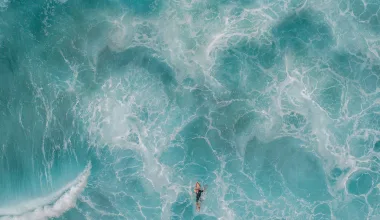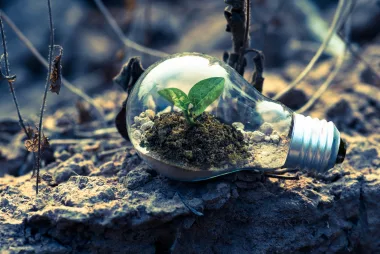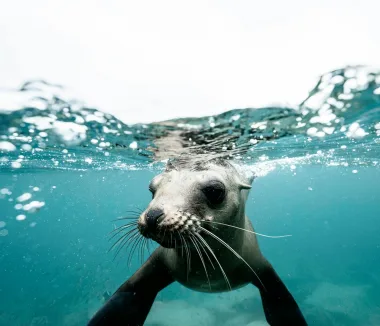Last Updated on November 8, 2023 by Ecologica Life
Water is our most precious commodity. Whether you need two litres a day or eight, and whether you choose to drink it from a bottle or the tap, you still need it.
A 32-page report published in March 2023 calls for a global effort to better manage our use of water. Don’t worry, we read the report so you don’t have to.
The report was published by the Global Commission on the Economics of Water (GCEW), and with a name like that, you’d think they’d know what they’re talking about.
In this article we will explore who the GCEW are, what do they have to say about the global water crisis, how this affects us all and what we can do about it.
Table of Contents
Who Are the GCEW?
The Global Commission on the Economics of Water is a new commission launched in May 2022 with a two-year goal to change the way we understand and manage water.
They were assembled by the Dutch government and cooperate with the Organisation for Economic Co-operation and Development (OECD), an organisation that was founded 60 years ago that advises governments on how to promote sustainable growth.
The GCEW has a website that shows who the members of the Commission are, in fact they are a range of experts in different fields from a wide range of countries.
The need to create this Commission started in 2006 when the Stern Review on the economics of climate change was published, and then in 2021 when the Dasgupta Review on the economics of biodiversity was published. These reports highlighted the need for better water management.
That is why the GCEW published its 2023 report: Turning the Tide A Call to Collective Action, and will publish its final comprehensive report in 2024.
The report is significant because it is the first time that the global water system has been thoroughly examined, explaining in clear terms both its importance to nations and the dangers to their prosperity if proper water management is neglected.
The Water Problem
Managing our water is key to protecting all life on Earth, and mismanaging our water is deeply linked to the climate problem, as well as the loss of biodiversity across the planet.
The water scarcity crisis is not related to the growing human population on Earth, the problem is much simpler, we need to manage water and stop biodiversity loss.
To understand the problem, it is important to understand how we are all connected in this. You see, the source of all our fresh water is rain.
How much rain a country receives depends not only on how it manages and uses water, but also on the state of forests and other ecosystems in neighbouring countries.
This is known as the green water cycle, it occurs when plants take up water from the soil and release water vapour from their leaves.
Many regions depend on the green water cycle for 40-50% of their rainfall. This point is very important, our neighbours and their land use have a direct impact on how much rain we receive.
Countries are interconnected not only through transboundary rivers or streams of groundwater, but also through atmospheric flows of water vapour
Global commission on the economics of water
The key message here is that this is something that affects us all, and unless we take drastic action to manage our water then the consequences will be felt worldwide.
Where Does the Water Go?
Some of our everyday items require huge amounts of water to produce. An average T-shirt requires 2,500 litres of water to produce. Avocados, almonds and even water bottles take a lot of water to produce. Worldwide, 70-80% of freshwater is used for agriculture.
In a trade known as ‘virtual water’ or ‘invisible water’ trade, regions that export water-intensive crops are actually exporting their water. The most obvious use of virtual water is for agricultural products, but a wide range of industrial goods also require a lot of water.
On the surface, it may appear that water-scarce countries and regions are making money by exporting their water, but their dependence on finite water supplies will be harmful in the long run.
Consequences of Mismanaging our Water
The report says that unless we take drastic action this decade, we could be 40% short of our water needs by 2030.
Worryingly, climate change and biodiversity loss are increasingly linked to the water crisis.
Water is not only a victim of climate change, it is also one of its main causes. Freshwater is the driving force behind all natural carbon storage.
The impacts of climate change are causing extreme water events, which directly reduce nature’s ability to absorb carbon. Droughts cause huge losses of biomass, carbon and biodiversity through fires.
The loss of wetlands leads to increases in flood events. For example, more than a fifth of the mangrove swamps that once lined tropical coastlines have been destroyed and cleared to make way for farmland and aquaculture.

The loss of these wetlands, the largest carbon stores on Earth, and of soil moisture, reduces the ability of terrestrial and forest ecosystems to store carbon and protect against flooding.
In the coming years, these natural ecosystems, which typically store carbon, risk becoming producers of greenhouse gas emissions, with catastrophic consequences for the rate of global warming.
If we fail on water, we will fail on climate change. To ensure that the transition to low-emission energy sources reduces rather than increases demand on finite water resources, we must also coordinate our policies for both.
What Are the Solutions?
Fortunately, while the water problem affects us all, it also offers solutions that can benefit us all. If we can tackle this problem globally, as we did with the Montreal Protocol, there is a chance that all our economies can benefit and grow sustainably.
The good news is that, the GCEW believes we already have the science, most of the technology and the political know-how to make water use sustainable globally.
Some of the simplest ways to manage water resources are also some of the most effective. Sealing leaks in pipes is a typical example, as outdated or poorly maintained infrastructure wastes a lot of water. 300 litres can be lost every year through a leaky tap.
Another key solution is to organise water use effectively. If we can do this on a global scale, we can ensure that everyone has access to enough water to meet their needs, while using it in a sustainable way.
In their report, the GCEW have set out in their report a seven-point call to action that they believe are the steps we must take in this decade if we are to solve the water problem.
First, we must manage the global water cycle as a global commons to be protected collectively and in the interests of all.
Second, we must adopt an outcome-based, mission-driven approach to water, encompassing all the key roles it plays in human well-being. In other words, we must fulfil right to safe drinking water.
Third, we must stop under-pricing water. Proper pricing, combined with targeted assistance to the poor, will enable water to be used more efficiently in every sector, more equitably among all population and more sustainably both locally and globally.
What this point really aims to achieve is that we value water as we should. Perhaps the reason many sectors, such as agriculture, waste water is because it is a precious resource that is undervalued.
Many industries and individuals (not all) act as if water is this infinite resource that will never run out. This is simply not true, whether you live in the wetlands or the desert, water is finite for everyone and all life.
If properly regulated, increasing the price of water can raise revenue that can be invested in water systems, innovation in water conservation, and subsidies for vulnerable communities that cannot afford water. This regulation must ensure that point two is always taken into account and that everyone has enough water to meet their needs, whatever the cost.
Points four, five and six relate to how we are going to finance this sustainable water movement. The fourth point is that we need to reduce the subsidies ($700 billion) that encourage excessive water use and other environmentally damaging practices.
In addition, companies, organisations and governments need to be more transparent in disclosing their water footprint, which will help us to incentivise more efficient water use.
Point five is to establish Just Water Partnerships to invest in low-income countries. Providing water and sanitation to everyone in need would cost just over £21 billion a year by 2030, or 0.1% of global GDP. The World Bank estimates that the economic benefits of this investment would be $60 billion a year.
Point six is about strengthening freshwater storage systems and water irrigation systems. This is important because it highlights the need to improve water use in agriculture, which consumes about 80% of the world’s water.
Developments in sensor technology are opening up new opportunities. Field sensors can monitor soil moisture levels for as little as $2 a year, allowing farmers to know if irrigation is needed and to calibrate irrigation more precisely than before. As artificial intelligence systems become more advanced they will help us monitor our water footprint.
If we can incentivise and scale up smart irrigation systems, we can create a win-win for both farmers, innovators and the environment. This is huge opportunity for innovators and investors who are working or may want to work with water conservation and irrigation technology.
Point six also highlights the need for water recycling in the mining sector. Mining lithium, which is used in electric car batteries, is very energy intensive. By recycling this water and using innovative technologies such as direct lithium extraction, we can significantly reduce water consumption.
Finally, point seven is about international cooperation. Adequate water management cannot be achieved by the current fragmented global governance. The GCEW suggests that by including water conservation in trade agreements, we can help promote international efforts to manage water properly.
How Can I Help?
It goes without saying that you can help at home by not wasting water. Shower only as long as you need to, don’t leave the tap running, etc. We published some tips to save water at home which may interest you.
But to help on a global scale, you can contribute in a few ways. The first is to exercise your right to vote and put pressure on your local and national politicians to manage water more efficiently. Organisations like Greenpeace are already doing this.
Second, choose wisely where you invest your money. If you are an investor, what is the water footprint of the company you are considering investing in? You might consider contributing to a fund like the Kenyan Pooled Water Fund (KPWF), which bundles water projects together.
You could consider the water footprint of the products you buy. Cotton can have a huge water footprint, so buying clothes that are made from organic cotton, linen or recycled products can help to reduce your water footprint.
Not all companies disclose their water footprint, and those that do may not consider the full length of the chain – typically the beginning of the supply chain has the largest water footprint.
Hopefully this will change. It is our hope, and the hope of the GCEW that governments will take this report and their final report in 2024 seriously. If they do, we can expect better water management globally and more transparent options for you as an investor and/or consumer.
We need to raise awareness of this issue, and urge politicians, organisations and businesses to take urgent action to save this most precious of resources. The benefits of doing so will far outweigh the costs.








